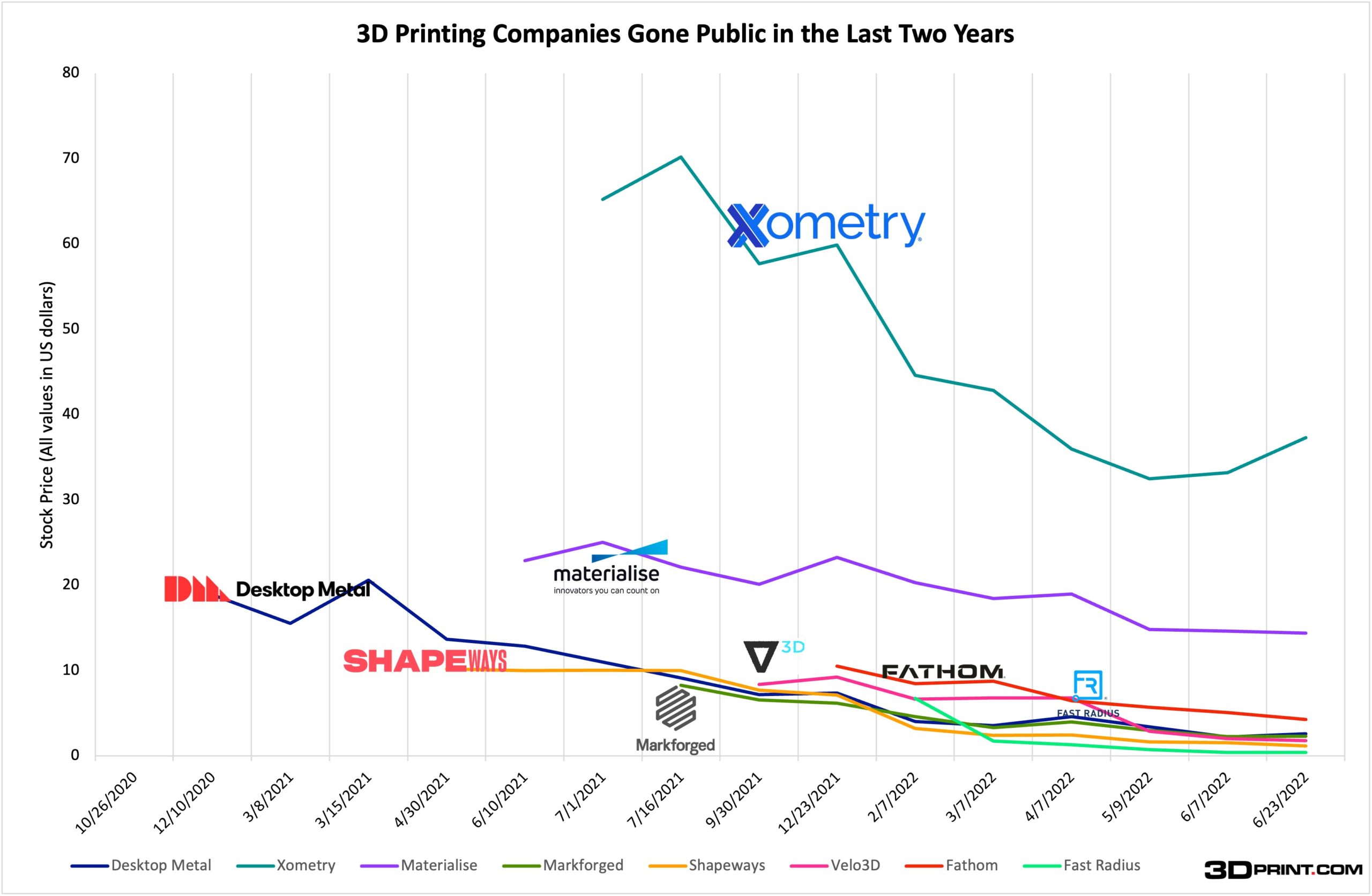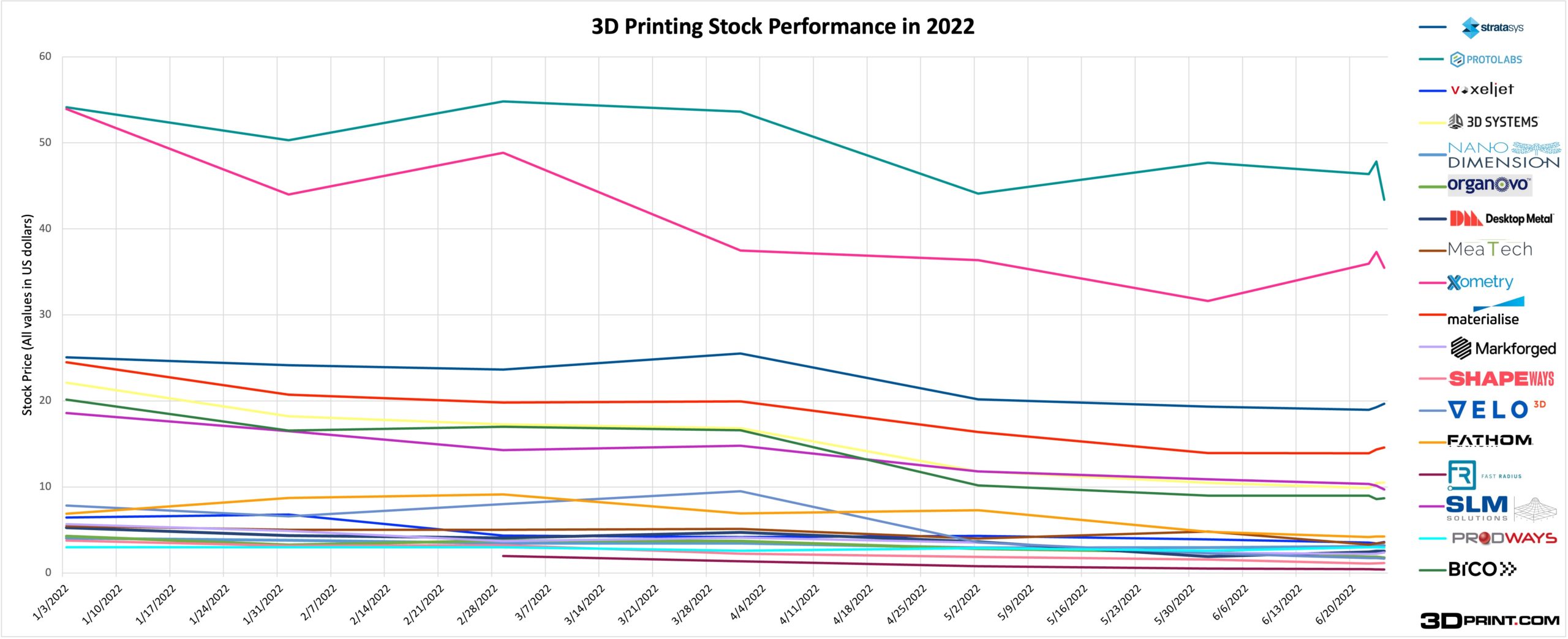After a ruthless start to 2022, the US’s three most widely followed indexes hit new lows as they entered the bear market terrain around mid-May. One month later, the Wall Street Journal reported that blue chips were down 18% this year, while the Nasdaq Composite has fallen 32%, and according to Deutsche Bank, the S&P 500 is currently on track for its worst half-year performance since the Great Depression.
Driven primarily by high inflation, rising interest rates, a stalling economy – with likely recessions in the US and Europe – and the ongoing war in Ukraine, the global stock market outlook is uncertain. Nevertheless, some experts anticipate the current bear market will hit bottom around early 2023, although JPMorgan says shareholders should prepare for strong returns in the second half of 2022 as the US economy avoids a recession. Either way, 2022 is already seeing the worst losing streak for global stocks since the 2008 financial crisis, a “meltdown,” as CNN calls it, that wiped out more than $7 trillion in market value from the blue-chip stocks in the S&P 500 alone.
With global markets tanking throughout the year’s first half, this might be a good time to revisit 3DPrint.com’s Stocks Zone.
Launched on July 27, 2021, the zone, dedicated to 3D printing stocks, is a great way to keep track of the trading and learn more about the 3D printing market activity. Aside from keeping up to date on the stock prices, readers can also find related news daily. Showcasing over 85 companies, the zone has great stock data for a glimpse into the 3D printing stock market.
On the trading floor
3D printing shares also reflect the downturn in 2022, following previously discussed global stock trends. For example, spearheading businesses like Stratasys (NASDAQ: SSYS), 3D Systems (NYSE: DDD), voxeljet (NASDAQ: VJET), SLM Solutions (ETR: AM3D), and Nano Dimension (NASDAQ: NNDM) saw their stock collectively stumble (See Graph 1).
 Graph 1 by 3DPrint.com
Graph 1 by 3DPrint.comAs the first company in the 3D printing industry to go public in October 1994, Stratasys went on to become a powerhouse and, in the process, acquired 12 companies, purchased IBM’s 3D printing intellectual property and related assets and was ranked top additive manufacturing (AM) platform vendor. Trading on the Nasdaq exchange, Stratasys stock escalated between 2009 and 2014. At that time, the price was no longer oscillating in the $10 to $20 range and reached peaks of more than $120 in 2014 (as shown in Graph 2). However, its share price would later fall below $30 in 2015, and the stock price is currently in the low $20s.
Even more pioneering than Stratasys is 3D Systems, a company founded three years earlier in 1986. Since then, the Rock Hill, South Carolina, firm has engineered and manufactured 3D printers, materials, and 3D scanners and is now a heavy hitter in bioprinting. The company first went public on May 27, 2014, on the New York Stock Exchange (NYSE) and has experienced peeks and troughs ever since.
Stock-wise, Stratasys and 3D Systems have shared similar moves. After dropping stock prices shook the companies in 2015, the competitors kept up a similar pace until 2019. Then in 2020, 3D Systems surpassed Stratasys, reaching its pinnacle stock price of $55.3 in February 2021. This year, however, shares have suffered like the rest of Wall Street, which means both companies have declined more than 50% and are struggling to pay high earnings per share (EPS).
 Graph 2 by 3DPrint.com
Graph 2 by 3DPrint.comGoing public
In the last two years, the world witnessed a rampage of companies trading in their private status for a SPAC deal to go public. These merger deals, known as SPACs, short for special purpose acquisition companies, are usually described as a back door to take a company public, and even though they have been around since the early 1990s, their popularity has soared in recent years.
Many 3D printing companies followed this trend, including Desktop Metal (NYSE: DM), Markforged (NYSE: MKFG), Velo3D (NYSE: VLD), Shapeways (NYSE: SHPW), Fathom (NASDAQ: FATH), and Fast Radius (NASDAQ: FSRD). Other companies, like Xometry (NASDAQ: XMTR) and Massivit 3D (TLV: MSVT), have chosen the regular IPO (initial public offering) route, and considering the backlash and scrutiny that SPAC deals have accumulated, experts don’t believe the frenzied trend will last, and companies choosing to go public will probably do so via regular listings.
The last two years gave us plenty of new 3D printing stock. But it hasn’t been easy for many of these companies as they had to navigate through one of the toughest years in the global market’s history. As a result, in 2022, most of them saw their stock price battered. Such as Fast Radius, which went from an opening price of $6.74 in February 2022 to having shares that now trade for pennies (43 cents on June 24, 2022).
Others saw their price tank, like Desktop Metal, with a price fall of roughly 70% in its first year, from $19 in December 2020 to $5.8 a year later. Similarly, Fathom’s stock price declined 58%, from $9.45 on its first trading day in 2021 to $4.26 this month. Companies like Xometry, 3D printed cultured meat maker MeaTech (NASDAQ: MITC) and Massivit 3D, which followed the traditional IPO path, also suffered the wrath of an imminent bear market in early 2022, with prices decreasing roughly 40%, 70%, and 50% respectively.
In 2022, all the leading firms in the industry saw their stock prices drop. In Graph 4, we can see the price evolution for 18 companies, including bioprinting giant BICO (STO: BICO), MeaTech, and rapid prototype designer and manufacturer Materialise (NASDAQ: MTLS). Due to this market crash, innovative companies have seen their stock prices fall below $10. In fact, in Graph 4, we observe that by May 2022, 13 companies were already under the $10 gridline. But many of these companies still have plenty of upsides.
For instance, Velo3D, which saw its shares at $2 on June 24, opened a European Technical Center in Augsburg, Germany, last week. Our Editor-in-chief, Joris Peels, was on-site during the inauguration and said that if the company’s progress in Europe is like its work in the US, “it may soon launch like a rocket.”
Others, like Markforged, might be trading at a lower price-to-earnings ratio than expected. Still, the Massachusetts-based company made its first acquisition in April, taking over Teton Simulation, whose trademarked SmartSlice technology automates validation and optimizes part performance for AM applications. Since coming out of stealth mode at the SolidWorks World trade show almost a decade ago, Markforged has been on a strong growth trajectory, with an equity valuation of roughly $2 billion. Another great example is Nano Dimension, an Israeli company with shares trading at $3 but with a lot of potential, growing from a team of 80 employees to 500 in a year.
With such a rough start to the year, it’s challenging to determine when the market will go up. Financial planners like Warren Buffet and Jack Bogle have repeatedly assured people not to “watch the market so closely” during periods of wild fluctuation. Bogle told CNBC in 2018, “stay the course,” since even “the big crisis shouldn’t let you change your mind.” With so much uncertainty – politically, financially, and socially – determining when the global market will recover will not be easy. However, the 3D printing industry has been launching new products, inaugurating AM centers, establishing plenty of collaborations and partnerships, and moving forward despite many hurdles, especially during the last two years of the pandemic. Hopefully, this will be enough to keep the public companies and the industry strong.
Subscribe to Our Email Newsletter
Stay up-to-date on all the latest news from the 3D printing industry and receive information and offers from third party vendors.
Print Services
Upload your 3D Models and get them printed quickly and efficiently.
You May Also Like
The Dental Additive Manufacturing Market Could Nearly Double by 2033, According to AM Research
According to an AM Research report from 2024, the medical device industry, specifically in dentistry, prosthetics, and audiology, is expected to see significant growth as these segments continue to benefit from...
Heating Up: 3D Systems’ Scott Green Discusses 3D Printing’s Potential in the Data Center Industry
The relentless rise of NVIDIA, the steadily increasing pledges of major private and public investments in national infrastructure projects around the world, and the general cultural obsession with AI have...
AM Research Webinar Explores Continuum’s Sustainable Metal Additive Manufacturing Powders
Metal additive manufacturing (AM) powder supplier Continuum Powders is working to develop solutions that empower industries to reduce waste and optimize their resources. An independent life cycle assessment (LCA) of...
3D Printed Footwear Startup Koobz Lands $7.2M in Seed Round
California-based Koobz is focused on reshoring the U.S. footwear supply chain with advanced manufacturing processes, including 3D printing. The startup just announced that it has added $6 million to its...


































